The history of Warwick School CCF band
A recent flurry of reminiscences from OWs, some of whom seem to be in favour of its resurrection, has prompted me to attempt to compile a history of the CCF Band. Opinions, needless to say, vary widely, from those who remember it with great fondness to those who were less appreciative. In 1937, in a report on the annual inspection, it was described in Portcullis magazine by “those members of staff who refer to it as "the yearning music of a god in pain".
Naturally, I turned to Portcullis to try to find out more. There seems to be no record of its inception, nor of its demise. Roughly the first mention comes in 1922 in a report on that year’s summer camp: “Cosserat is to be congratulated in being first in the bugling competition”. In the 1925 camp not enough volunteers attended, so “our Band, which made its first appearance at camp for many years, was too small.” There is, however, a photograph of this noble little band:
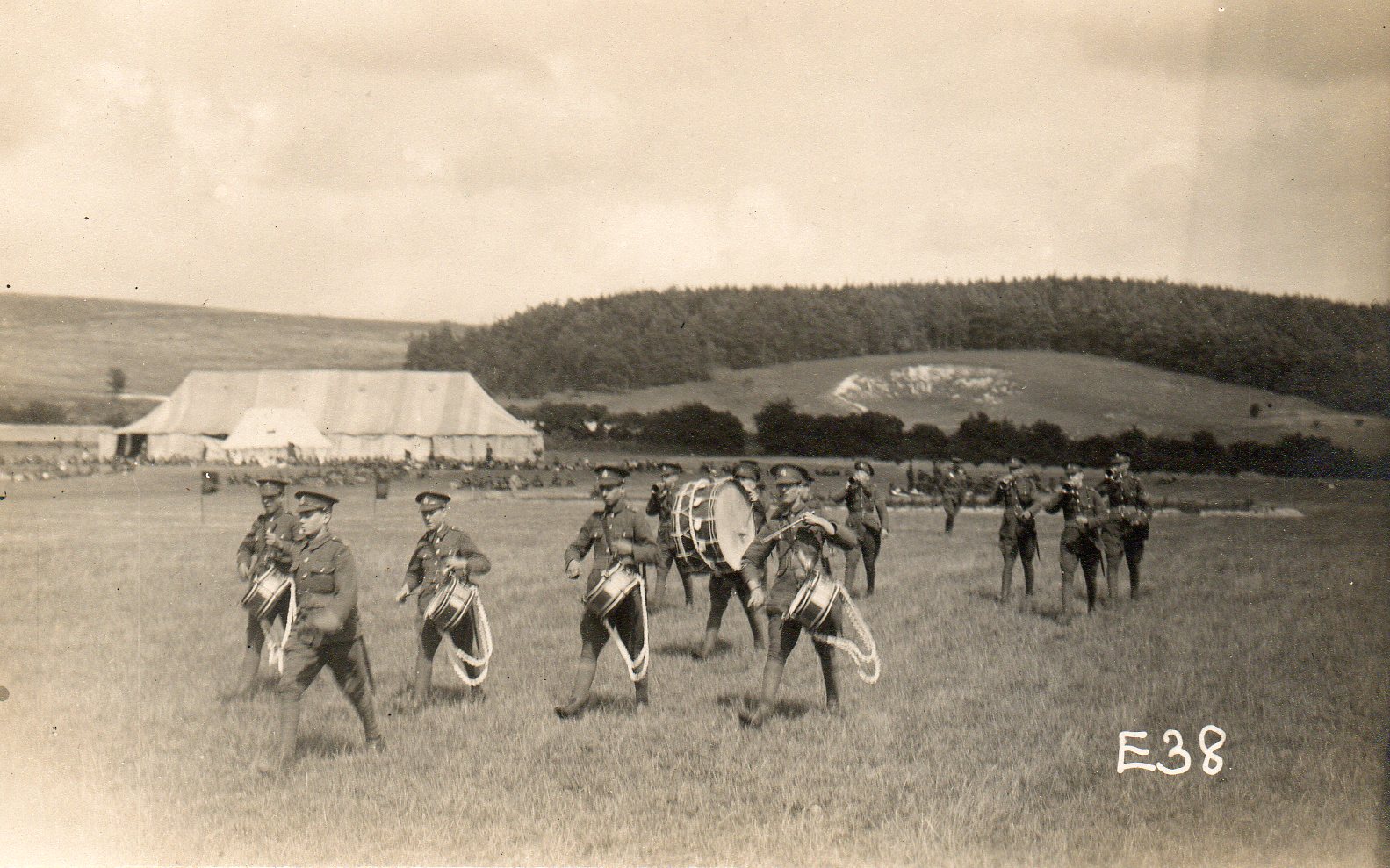 The Inspector of the 1928 Band reported: “There is a self-taught Drum and Bugle Band – well-turned-out and quite good.” In December 1933 a subscription was proposed “for drums to replace our twenty year old kettle drums. The Band is now equipped with six regulation side-drums it so thoroughly deserved.” The following year, in 1934, it was proposed “to create a fund for the upkeep of the Band instruments. It has been decided to make a charge of two shillings a term to each member of the Band for the excellent instruments we now possess.” In the 1936 camp, the Warwick School band was placed fifth in the competition over the entire camp.
The Inspector of the 1928 Band reported: “There is a self-taught Drum and Bugle Band – well-turned-out and quite good.” In December 1933 a subscription was proposed “for drums to replace our twenty year old kettle drums. The Band is now equipped with six regulation side-drums it so thoroughly deserved.” The following year, in 1934, it was proposed “to create a fund for the upkeep of the Band instruments. It has been decided to make a charge of two shillings a term to each member of the Band for the excellent instruments we now possess.” In the 1936 camp, the Warwick School band was placed fifth in the competition over the entire camp.
Two images from the 1937 Inspection show an extremely disciplined OTC Band:
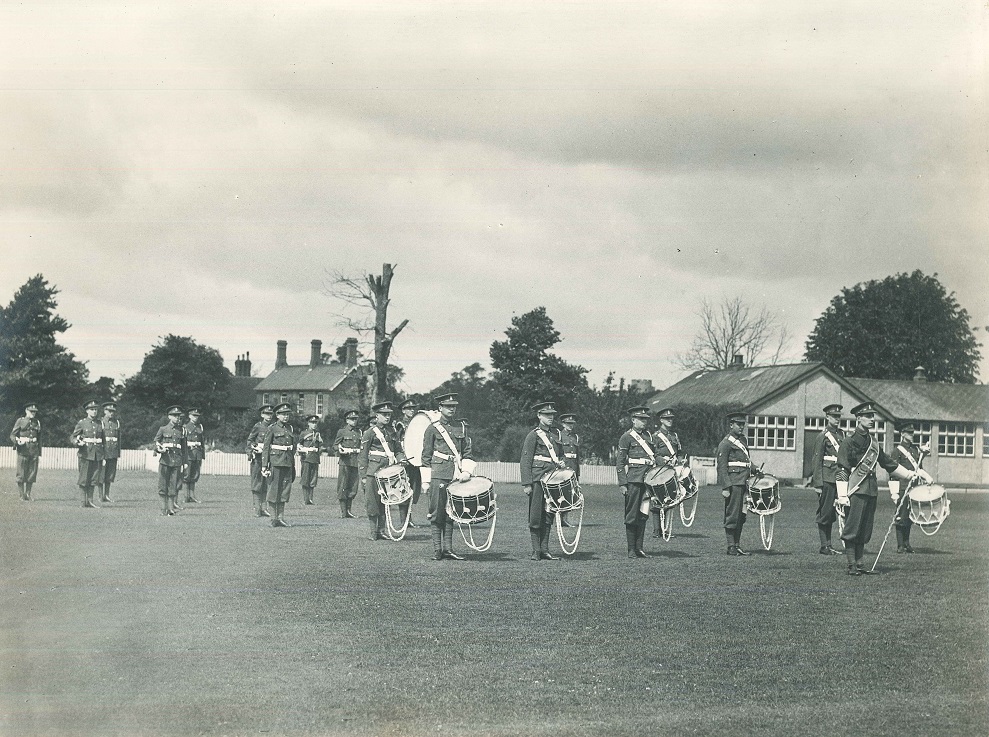
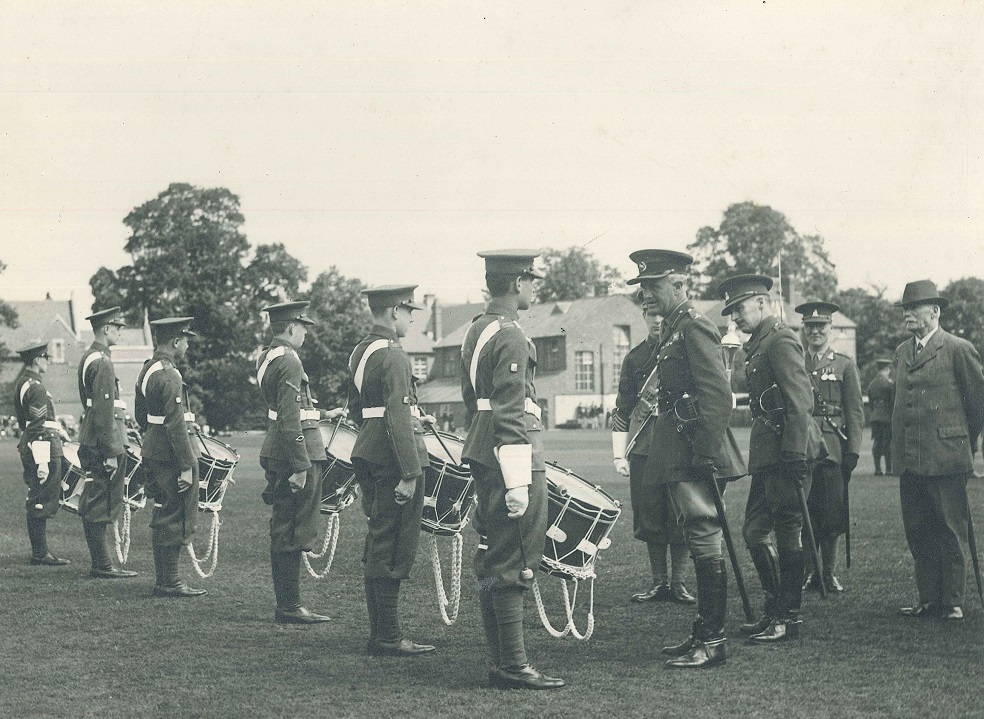
In this superb photo of the 1939 OTC Band, we see that there are eight side-drums and one bass drum, and up to ten buglers. Two of the drums are painted with the school crest, and “Warwick School OTC”.
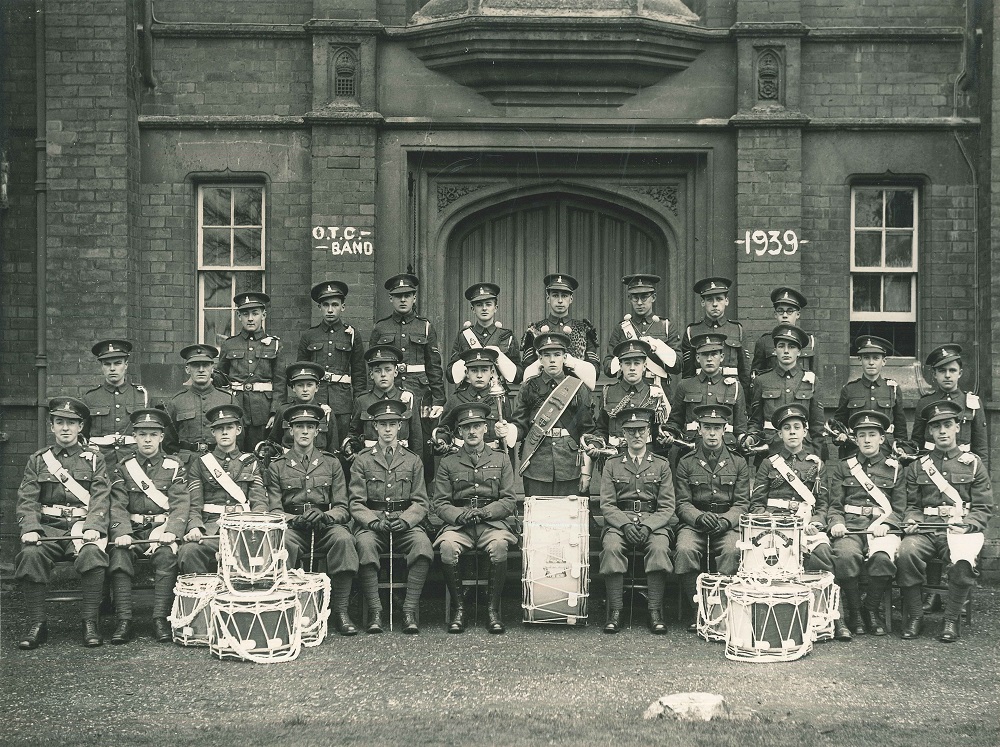
On 6th June 1947, Field Marshal the Viscount Montgomery of Alamein, Chief of Imperial General Staff, reviewed what was then called the JTC, or Junior Training Corps. “After reviewing the Corps, he inspected the Band; he asked about one of the prize bugles and signed the big drum.” The first blower of that particular bugle was the future Olympian, A. G. K. Brown.
Field Marshal Montgomery finding A. G. K. Brown’s name on a 1931 bugle – still owned by the school.
The school regularly supplied buglers, as in this photo announcing the Queen’s Accession in 1952.
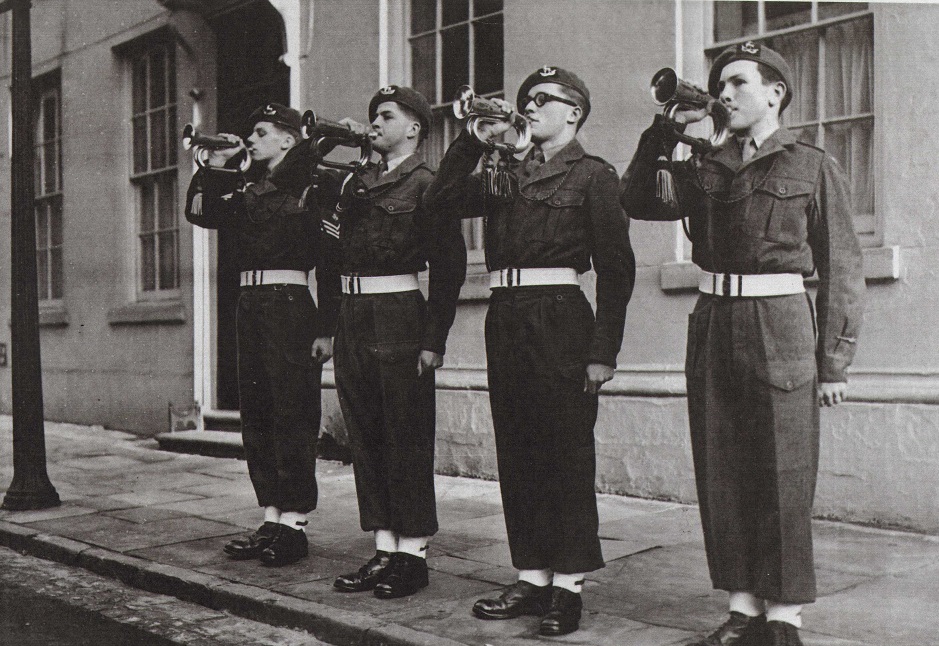
As in 1947, by 1955, the uniforms had been modernised, but the Band’s equipment seems to have been largely unaltered. P. N. G. Whitlam is still there, of course – he retired in 1964.
From the same year, 1955, we have a photo of the Band on Church Parade, marching down Jury Street after the annual Remembrance Service at St Mary’s Church.
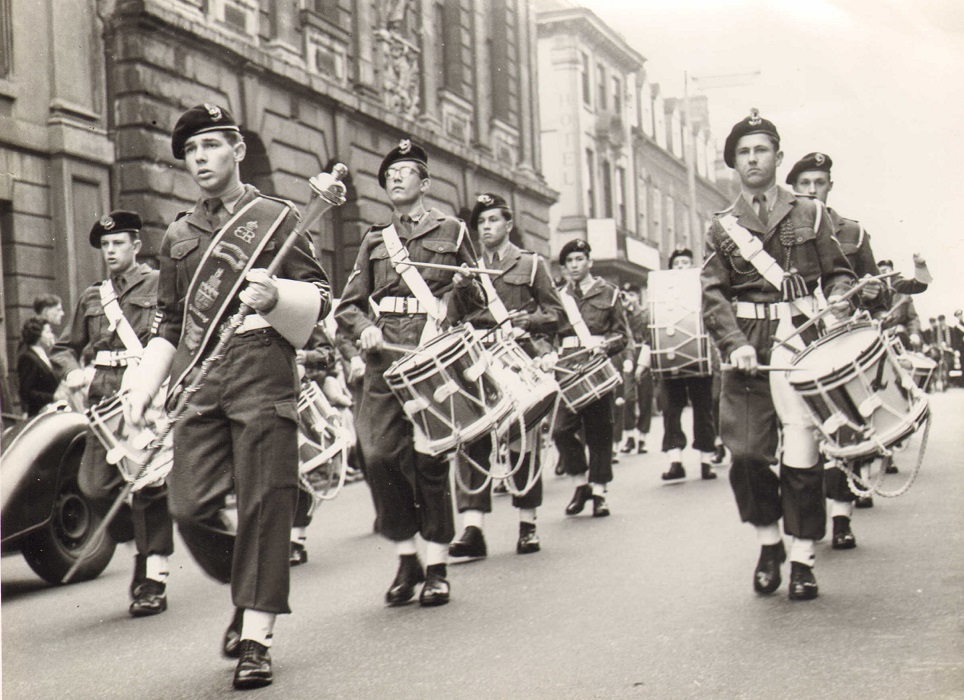
Graham Leake (WS 1948-55) recalls "carrying the bass drum to St. Mary’s church on a hot, sunny day. I beat it all the way there, while standing on a church parade and all the way back. I was exhausted and drenched by the time I collapsed on my bed.”
In 1968 the Band is once again pictured on Church Parade, marching down Jury Street, with a couple of policemen very helpfully keeping the traffic stationary. An impressive array of dignitaries is outside the Court House. The school also “supplied buglers for the Assizes”, as mentioned in a 1955 issue of Portcullis magazine.
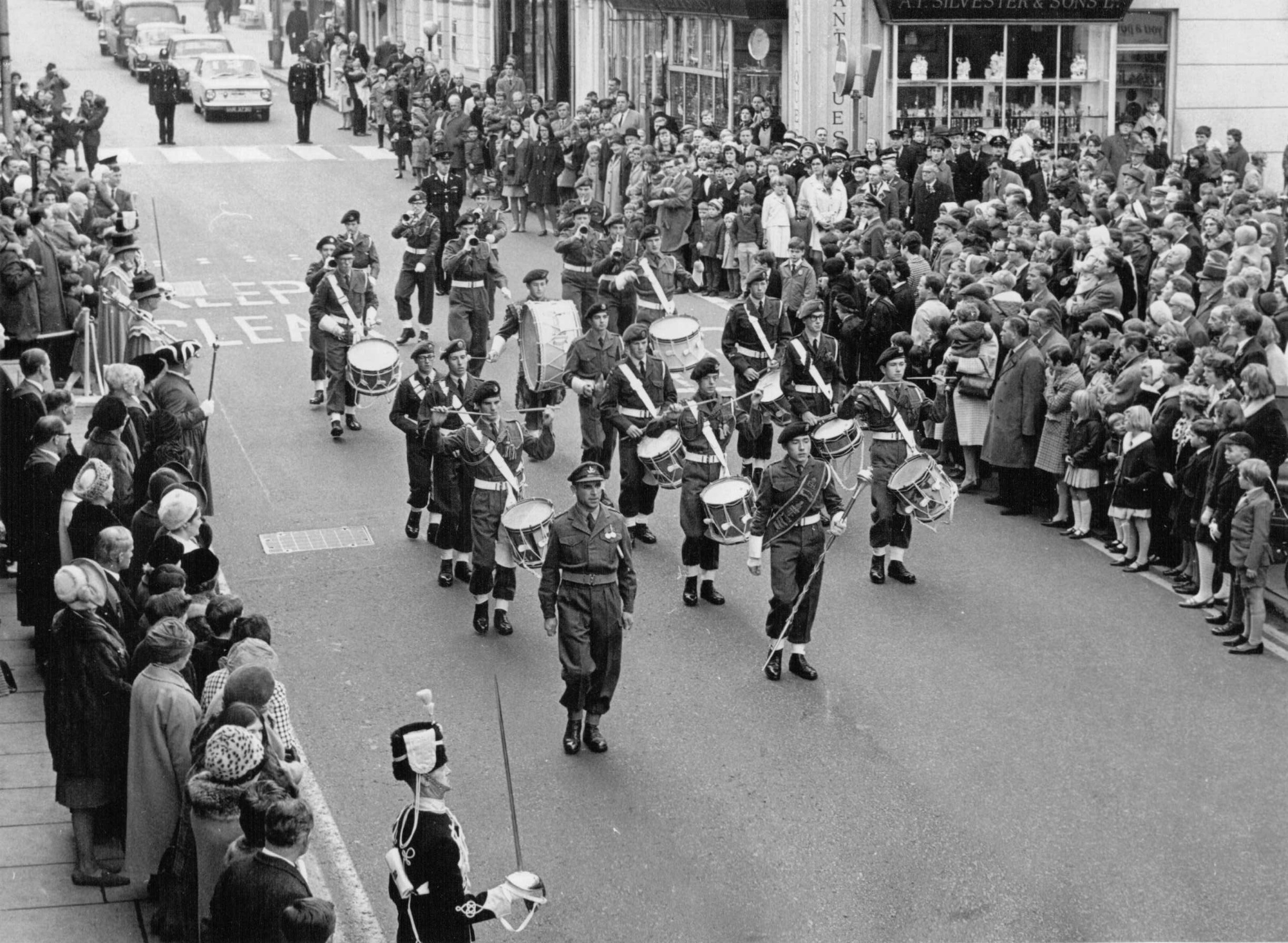
There is very little mention of the CCF Band in the Portcullis magazines from the 1970s and 1980s. Tim Beachus (WS 1970-80) has generously provided reminiscences from this period: "I think the latter-day demise came about (as I heard it) from the logistics of managing traffic in the town for the Parade as well as availability of staff (usually a boarding master associated with the CCF) to go up with the Band. At least that may have been the excuse for sensitive souls and nothing to do with the buglers beginning to sound like wailing cats.
The repertoire of music was limited to about 10 bugle plays and many drum repetitions - each one passed on from the prior generation of bugle and lead drummers to the next. None of us was formally trained as musicians; we look the hand-downs and made some new things up. As time went on, many were either forgotten or not passed down because each bugle play was numbered and by the time of the latter years, there were many missing “pieces”. Each bugle play was introduced by a double tap lead solo with a call out by lead bugler for the play - be it #1, #5, #8 or whatever — but the plays were beginning to thin in ability, as those in between were lost in time. Meanwhile, further elaborations were creeping in to make it more modern, with the drums introducing cross stick taps and other sophisticated self-learned plays.
The CCF band was the public-facing aspect of Warwick School and the associated Regiment. It was not easy to get into the band and if you couldn’t play consistently or turned out poorly, you didn’t last long. To this end, the members strived for excellence, especially when it came to the Parade. The week before Remembrance there would be a whirlwind of activities in dress fitting, boot polishing, belt whitening, drum and bugle brass polishing and practising over and over for the “big day”. On one occasion the Band was bussed out to a military barracks for proper training by the Army on how to do a Parade (march, turn, stick work, etc.). I think this was in Dalton Barracks. It was a fun day out for all, but I think the Sergeant Major thought we were a right lot of duds at first.
In the late 60s through to the 80s, the main purpose of the Band was in leading the Parade through the town on Remembrance Sunday. We would essentially practise every Thursday afternoon, and when getting close to the parade weekend, live practice would consist of assembling under The Limes, marching out of the main gate (by the chapel) and turning left. The march would continue down Myton Road and loop the Bridge End roundabout, turning 180 degrees back to the Guy Nelson Hall. Here we would disband, returning the kit to the CCF hut that was behind Bridge House. For each of these outings, we would have been accompanied by Mr Collis or Mr Bannerman.
When the ultimate day for the Parade came, we would continue all the way up The Butts to the top of Northgate St, and then proceed down that to St Mary’s Church. We would have to chuck all our gear into the North Transept and pack as many people as possible in for the service. After the service we would head up Church St, and lead the full Parade at that point into Jury Street for the march-by of flags and dignitaries heading to East Gate, continuing down Smith Street to loop back at the Fusiliers Museum (this was the regiment for the CCF Band as we were known as 'affiliated cadets'), do a regimental pass-by and continue down St Nicholas Church St to return to the school.
Although the School CCF was primarily affiliated with the Army, there was a CCF RAF Contingent too. At one point this Air Force section had a glider that was propelled into the air on the school fields by two massive elastic bands, stretched out by about 10 boys a side until it was about to rip. We would have our band practice in this area and would have to watch out for any incoming, out of control, glider on its return path!
I believe that previous bands would place a poppy on their beret for Remembrance, but this changed to when the Fusilier hackle would be worn on the beret for specific parades.
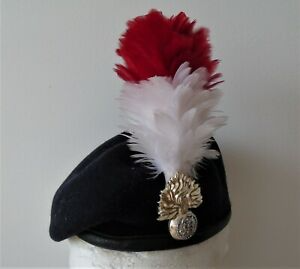
Below is a photograph of the 70s band - I think this was taken for the 1978 Remembrance Parade, opposite the entrance to St Nicholas Park. One noticeable difference is that the band now wore #2 Dress uniform (introduced in around 1975) that was an upgrade from the past fatigues, with the earlier brown linen or the later white gaiters of the prior dress codes.
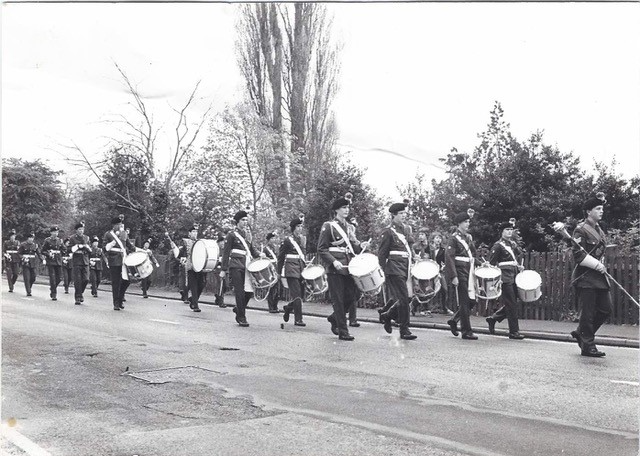
Visible are the new snare side drums on the outsides of the front row. Leading the band is Adrian Doughty, holding the Mace". Tim Beachus is on the left of the front row. Tim concludes: “By this era you can see we had become quite sophisticated, with the two cymbalists in the fourth row. It was really amazing to think that these instruments, particularly some of the bugles, were decades old, yet sounded so good!”
Steve Walter (WS 1982–89) who played the tenor drum in the Band (“no real skill involved”) recalls: “The Band was assembled at the start of Michaelmas Term in order to rehearse the march from the school up to St Mary’s on Remembrance Sunday. After the service we marched through the town back to school. Members of the Band were allowed to wear a white braid in their CCF uniform. This, I recall, was my main reason for signing up! I am certain that the last outing of the CCF Band was on Remembrance Day, 1986. It was my 16th birthday.”
A few Band items have been preserved in the school archives. We have a couple of bugles, dating from the 1930s, the bandmaster’s sash (probably from the 1950s), a couple of bandmasters’ conducting staffs (the earlier one being very battered), and the carcase of a bass drum. Formerly hanging in the CCF hut was a fragment of a drum-skin, signed by Field Marshal Montgomery on his visit in 1947, but this has gone AWOL.
Gervald Frykman, May 2023